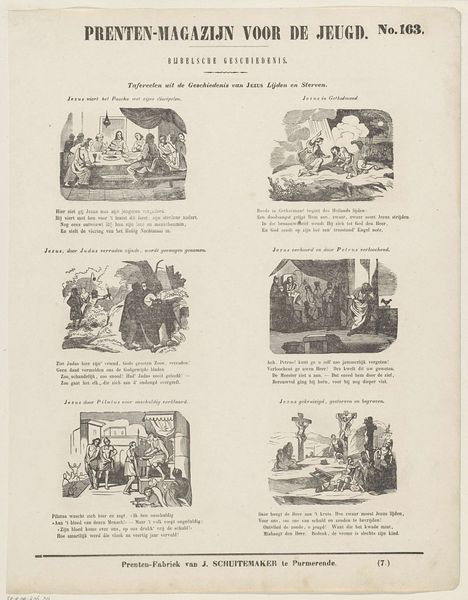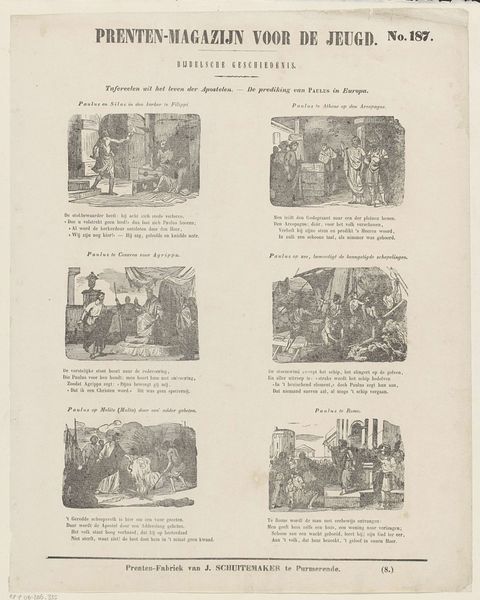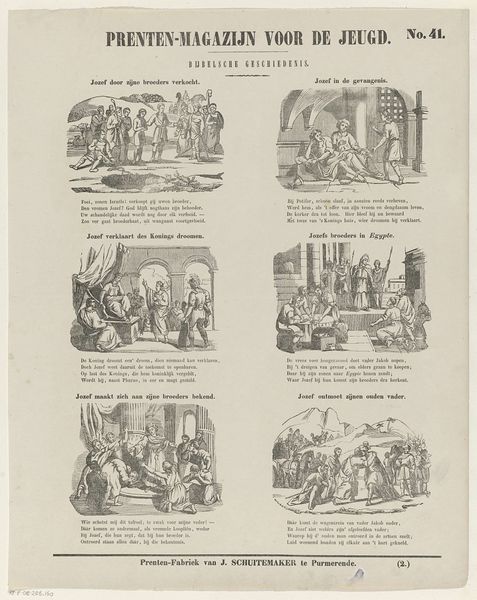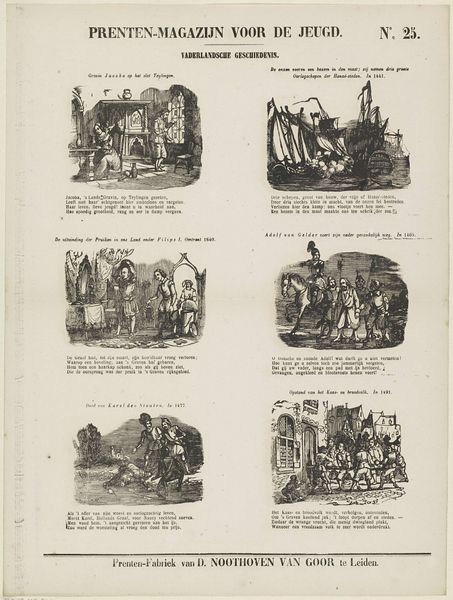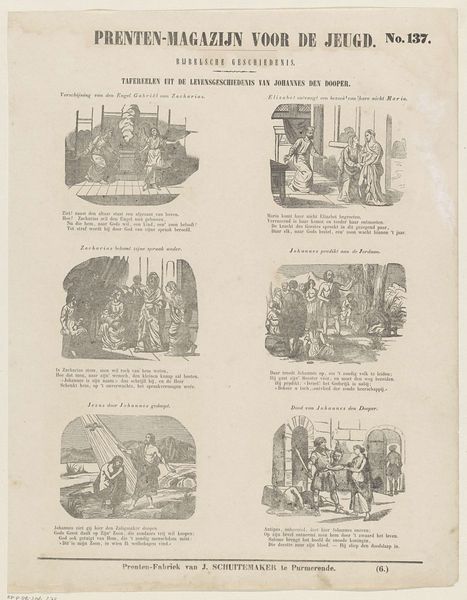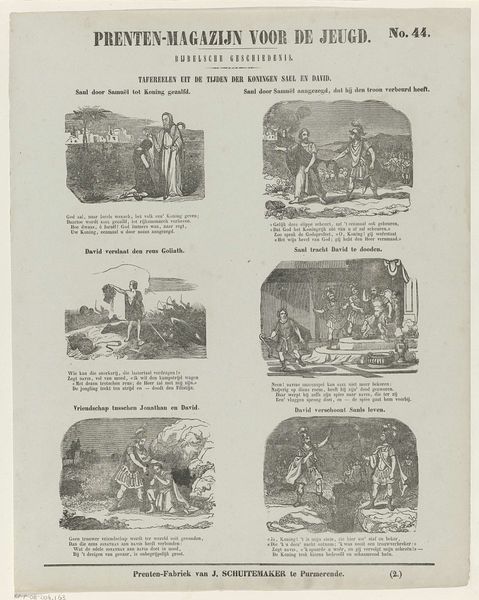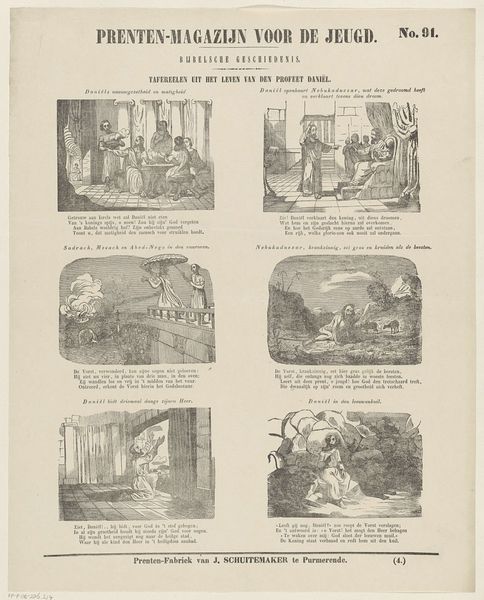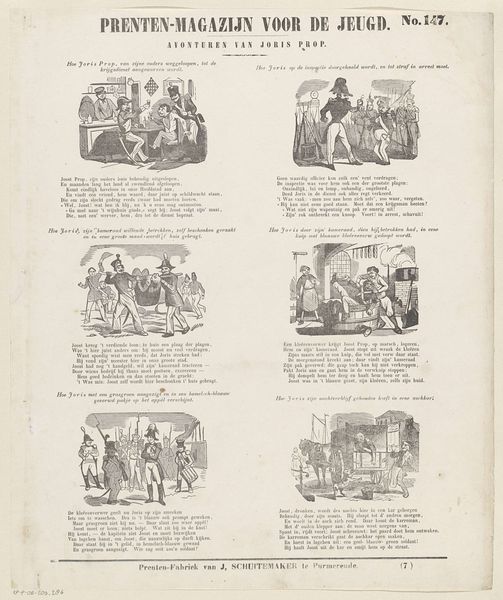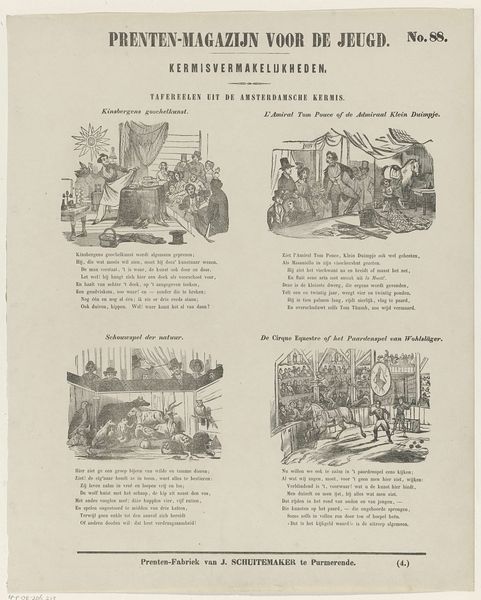
lithograph, print, paper
#
narrative-art
#
lithograph
# print
#
paper
#
romanticism
#
genre-painting
Dimensions: height 415 mm, width 323 mm
Copyright: Rijks Museum: Open Domain
Curator: This print from around 1850, "Tafereelen uit de geschiedenis van Jezus opstanding en hemelvaart," is by Jan Schuitemaker. It depicts scenes from the resurrection and ascension of Jesus, rendered as a lithograph. Editor: It strikes me immediately as quite classical. The scenes are clearly delineated, each acting like its own miniature stage, and yet there’s an attempt at romanticism through the emotional portrayal. It feels like a history book illustration made art. Curator: Schuitemaker seems very engaged in providing visual instruction in religious history and biblical studies, using common images for common understanding. Look how narrative is deployed within each individual vignette, guiding the viewer’s reading. How does this use of established imagery contribute to a wider cultural memory? Editor: It evokes such deep cultural roots. I think about how, for generations, visual language has been vital for spreading spiritual messages. Religious symbols gain their emotional weight over time; here we see these stories made accessible and repeatable across different contexts. Note, for instance, how in this era mass-produced religious iconography normalized this imagery as well for wider adoption and devotion. Curator: Indeed, this print allows us to study faith as a visual communication technology – what kind of visual arguments were considered effective during the mid-19th century, for example? We might examine what socio-economic anxieties the comforting idea of the afterlife allayed, or how the iconography helped assert social dominance through narratives of authority. Editor: I am intrigued by the figures in the scenes – Jesus appears with specific gestures; even their garments relay codified, pre-approved emotional cues for believers, a symbolic language inherited from centuries of artistic tradition. What is fascinating is how these motifs continue resonating—these stories visually passed down—continue to subtly influence society's emotional repertoire today. Curator: Considering all of that, do you believe we can better contextualize such a romantic lithograph for modern sensibilities, when so many of the original sociocultural foundations are gone? Editor: Absolutely. Understanding the historical symbolism invites empathy for diverse expressions of faith; understanding these symbols enables recognition of visual strategies across cultures, whether or not belief persists. I appreciate art forms that help contextualize history.
Comments
No comments
Be the first to comment and join the conversation on the ultimate creative platform.
